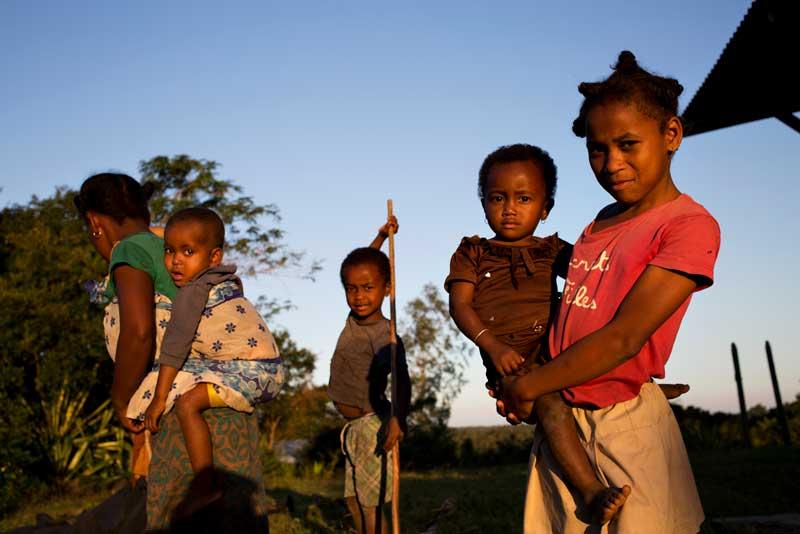By Jason Hopps and Neha Sud, IFC Communications
TOLANARO, Madagascar—For generations, zebu cattle have symbolized power and prosperity in Madagascar.
With their distinctive humped backs, long crescent horns, and flapping dewlaps, the animals are used to pull carts and plow fields; they’re even featured on the country’s coat of arms. In Madagascar’s bustling capital, Antananarivo, zebu gain right-of-way ahead of cars and rattling Citroën taxis, while in upscale restaurants and street-side joints, hungry patrons savor sizzling zebu steaks.
But despite their prominence, zebu herds have dwindled from 23 million in the early 1980s to about 6 million today. One Malagasy entrepreneur plans to rebuild the island’s cattle industry and resurrect a zebu beef export market that faded decades ago due to chronic underinvestment and a lack of proper veterinary care.
Backed by a $7 million IFC loan and extensive advisory support from IFC and the World Bank, BoViMa—short for Bonne Viande de Madagascar—is building a modern feedlot and slaughterhouse close to Tolanaro in Madagascar’s impoverished South. The feedlot will source zebu and animal feed from local breeders and farmers, supporting a wide network of jobs and trade.
BoViMa, a member of the SMTP Group, plans to produce zebu meat for domestic and foreign consumption, including the fast-growing Gulf markets of the United Arab Emirates and Saudi Arabia. Danil Ismael, the company’s founder and chief executive officer, expects it will provide a much-needed economic boost for Madagascar, where unemployment is high and 60 percent of rural families rely on livestock for their income.
“I think the BoViMa project will completely change the South,” Ismael says. “We will buy the animals from farmers across the South and will need between 90,000 to 120,000 tons of animal feed annually, which we will also buy from local farmers. In the end, we will be working with a network of not less than 12,000 farmers and breeders.”
The construction site is already buzzing with activity as roughly 250 workers lay bricks and pour concrete for BoViMa’s office, slaughterhouse, and feedlot. For most, it’s their first formal job. Once the facility is operational, it will be the area’s largest employer.
Project coordinators will also work closely with farmers, honoring their traditional practices while introducing modern, sustainable techniques to grow their herds and their incomes. IFC is helping BoViMa create a robust supply chain with a livestock management system and a program to assist smallholder herders and farmers.
“Many livestock farmers are skeptical about vaccinations and modern medicine, as they have never used them,” says Nenana Bodo, BoViMa’s nutritionist. “So, we are going village to village, educating breeders about animal health.”

The Bigger Picture
BoViMa’s strategy will help formalize Madagascar’s animal husbandry sector and increase food security by delivering protein-rich hides and offal to the local market.
The company also plans to build a renewable energy system using solar, wind, and biogas. The goal is to become energy self-sufficient about five years after production begins in 2019. The Ifaho River, which flows near the future feedlot and slaughterhouse, will be used for irrigation, taking advantage of an untapped resource.
Agriculture is a mainstay of Madagascar’s economy, accounting for more than a quarter of its gross domestic product. Once up and running, BoViMa’s new facilities are expected to make a significant contribution to economic growth by supporting local farmers and breeders, and attracting infrastructure investment.
For farmers like Jeannot Koto, BoViMa will transform the way cattle are bought and sold. Today, Koto must walk 20 kilometers over tough terrain to try to sell his cattle—with no guarantee a buyer will be waiting.
“With BoViMa, the market will come to us,” he says. “I would be so happy if our zebu meat is of good enough quality to be exported. This means development for our region.”
Join the conversation: #IFCmarkets
Published in July 2018


